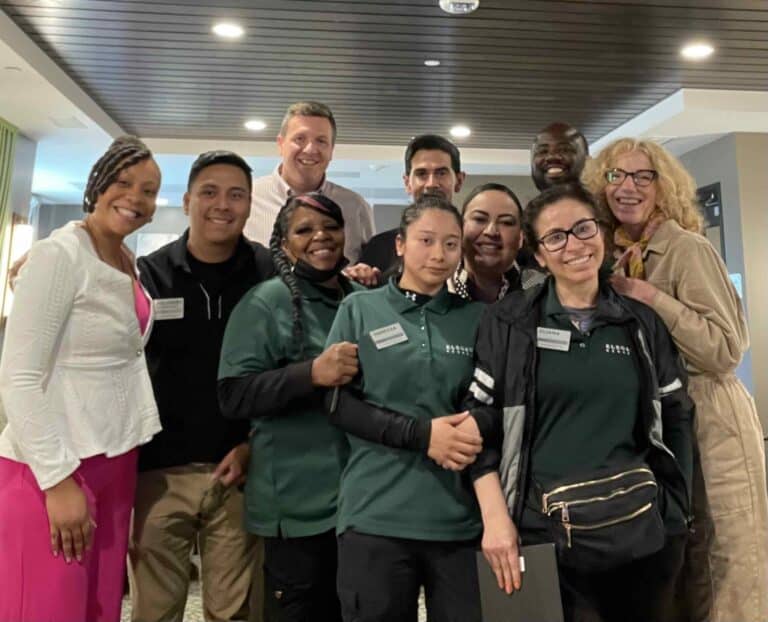
Today’s HR leaders are faced with more challenges than ever before, many of which require immense compassion, understanding, and sensitivity.
As many organizations make their return to the office, HR executives and leaders are being asked to identify personalized solutions for their workforces en masse. However, to do this at scale requires a solution-finding approach rather than simply being a problem-solver.
A problem-solver approach often focuses on the problem itself and finding ways to correct it. A solution finder, on the other hand, focuses on the underlying cause of the problem and how it can be prevented in the future. While this sounds easy to do on paper, the reality is that becoming a solution-finder takes time and practice.
To get tips on how to do this successfully, we sat down with Jim Ries, the Director of Business Development with Offit Kurman Attorneys At Law, one of the fastest-growing law firms in the country.
With offices scattered throughout the US, Offit Kurman Attorneys At Law specializes in a multitude of legal services including business tractions, real estate, estate planning, and alternative dispute resolutions for multiple industries including technology, cannabis, non-profits, and construction.
It’s through this experience that Jim Ries shares his tips for becoming a solution-finder. Here’s what he had to say.
Solutions don’t always require you to reinvent the wheel
Problems come in all shapes and sizes, and no one understands this better than HR professionals. Whether you’re dealing with productivity and performance, a change in management, compliance, harassment, or discriminatory actions, the reality is each situation will require a tailored approach.
HR policies and frameworks can only be so helpful, as many situations may require you to broach new topics. Or, as many of us know all too well, many challenges are time-sensitive, but you may not have the time and resources available to handle them.
In situations like these, what do you do? Whenever possible, look to see if the solution already exists. Tap into the expertise of industry leaders, wherever you can, so you don’t have to reinvent the wheel. How do you go about finding these solutions? You’ve got several options.
How to find solutions (and implement them)
A quick online search is a great place to start, especially when it comes to finding industry experts who may have already discovered and implemented solutions, successfully.
Also consider books, podcasts, YouTube videos, and blogs for expert insights. Listen for innovative ways leaders have implemented solutions so that you can adapt to your specific situation. Sign up for industry-specific newsletters so you can stay on top of the latest topics and solutions; as an added bonus, doing this will also help you discover industry leaders you can follow on social media to keep the learning going.
Sometimes, just knowing others have tackled (and conquered) similar concerns can be helpful. You are definitely not alone and likely not the first person to try to solve your challenge.
Remember, when industry experts learn something new, they generally don’t want to keep it to themselves. As such, they make the information readily available to those who need it.
But, doing this requires you to get outside your comfort zone. “Get comfortable with being uncomfortable,” he says when telling HR leaders to think outside the box in terms of finding applicable solutions to their employees’ problems.
Take advantage of LinkedIn and Google Alerts
Finding a solution requires thinking outside of the box.
LinkedIn is an excellent resource for gaining inspiration, joining groups that share insights for your industry, and following HR leaders for advice. There are also innumerable thought leadership events and webinars easily accessible with a simple search. Join everything you can so you can tap into prominent solutions and vendors, as needed.
Don’t be passive in your exploration, however. This is where a little discomfort and cold outreach can produce fruitful results.
Try reaching out to experts on LinkedIn with a simple introductory message, inviting them to share their insights or suggested solutions to your plight. Ask if they have a few minutes to chat and come prepared with questions to make the best use of your time. Or, consider simply posting about it, when appropriate, for your larger network to weigh in on.
Once you’ve found potential solutions, focus on contextualizing them to your unique situation and organization. Go a step beyond adapting solutions to your larger organization to consider any tweaks that might be necessary for each department (e.g. what works for Finance might not work for Marketing).
Make sure that any changes or rollouts are clearly communicated. Town halls, emails, announcements in Slack or Teams channels, posts on intranets, team lead promotion, and formal training can help ensure everyone is on board and aware of the solution. Remember, different situations not only require different solutions, but they require different methods, as well.
Another solution resource you may not immediately consider is Google Alerts. By setting up an alert for a particular keyword, industry buzzword, or topic, you will have a fresh source of ideas as they are released. This can also alert you to industry events, new publications, and videos that will focus on solutions relevant to your workforce.
Finding a solution is a marathon, not a sprint
Unless you’re dealing with a time-sensitive issue, finding a suitable solution to common HR-related problems is usually a marathon. In other words, you may need to take time to develop a solution and pace yourself.
You might feel the temptation to panic and find an immediate solution, even if it isn’t the best fit. This is where pacing yourself, focusing on realistic steps, and leaning into your team can help you from simply reacting.
Consider breaking up your bigger goal into smaller, more actionable tasks. This can help you identify steps that might depend on corrective action, new processes, additional team members, or tools, to succeed.
Outlining the smaller tasks can help you set an anticipated timeline to keep everyone on track. It can also reveal any gaps in your thought process so your solution can be scalable, repeatable, and suitable for your company.
If you start to feel overwhelmed, see what you might be able to delegate or share with your team or supporting departments. The more you can focus on finding a solution, rather than being stumped by the problem, the more likely your solution can make a lasting difference. Ultimately, find a system that works best for you and run with it.
Let’s find solutions, together
Here are some additional tips for developing a solution:
- Delegate, don’t suffocate: The less on your plate, the easier it’ll be for you to make critical decisions without feeling the pressure of having to make those decisions quickly.
- A/B test: Wherever you can, test solutions. Whether it is testing a new way of rolling out a solution, means of announcing the news, or perhaps frequency of communication, test wherever you can to see what is the most impactful.
- Consider outsourcing: There are only so many hours in a day and you/your team cannot be experts in everything. If you need additional support that you can’t find internally, look externally so that you can become more efficient and agile.
- Talk to your friends and co-workers: Just because a problem is work-related, doesn’t mean you can only talk to your peers. Ask your relative or friend what they would do if they were in this situation. Sometimes, an outsider’s perspective can help you look at things from a different angle, which can spark a creative solution.
- Measure your results: Once you implement a solution, look for metrics (ideally established before the launch) to see if it is working. This will help you optimize your process and implementation in the future.
Lean into emotional intelligence
Having a high level of emotional intelligence is especially important when finding solutions to HR challenges. At the end of the day, you are dealing with people. Where you can, try to “read the client.” Pay attention to their body language, inflection, and tone.
You might find that paying attention to these nuances will help you identify what the root of the problem truly is so that you can come up with an applicable solution, rather than what it might have seemed originally. By paying attention to the non-verbal cues, you are better equipped to offer the guidance, sensitivity, and compassion they need based on previous (but similar) experiences.
This is at the heart of being a solution-finder versus a problem-solver. As mentioned earlier, a problem solver simply finds a means to an end. It is easier to dismiss, or miss, the underlying cause of the issue which can only lead to a repeat of the same concerns.
As you plan for the coming year and tackle the hurdles that pop up, we urge you to focus on finding the solution with these tangible tips. If you need inspiration or would like to be connected to fellow leaders, we are happy to help.





